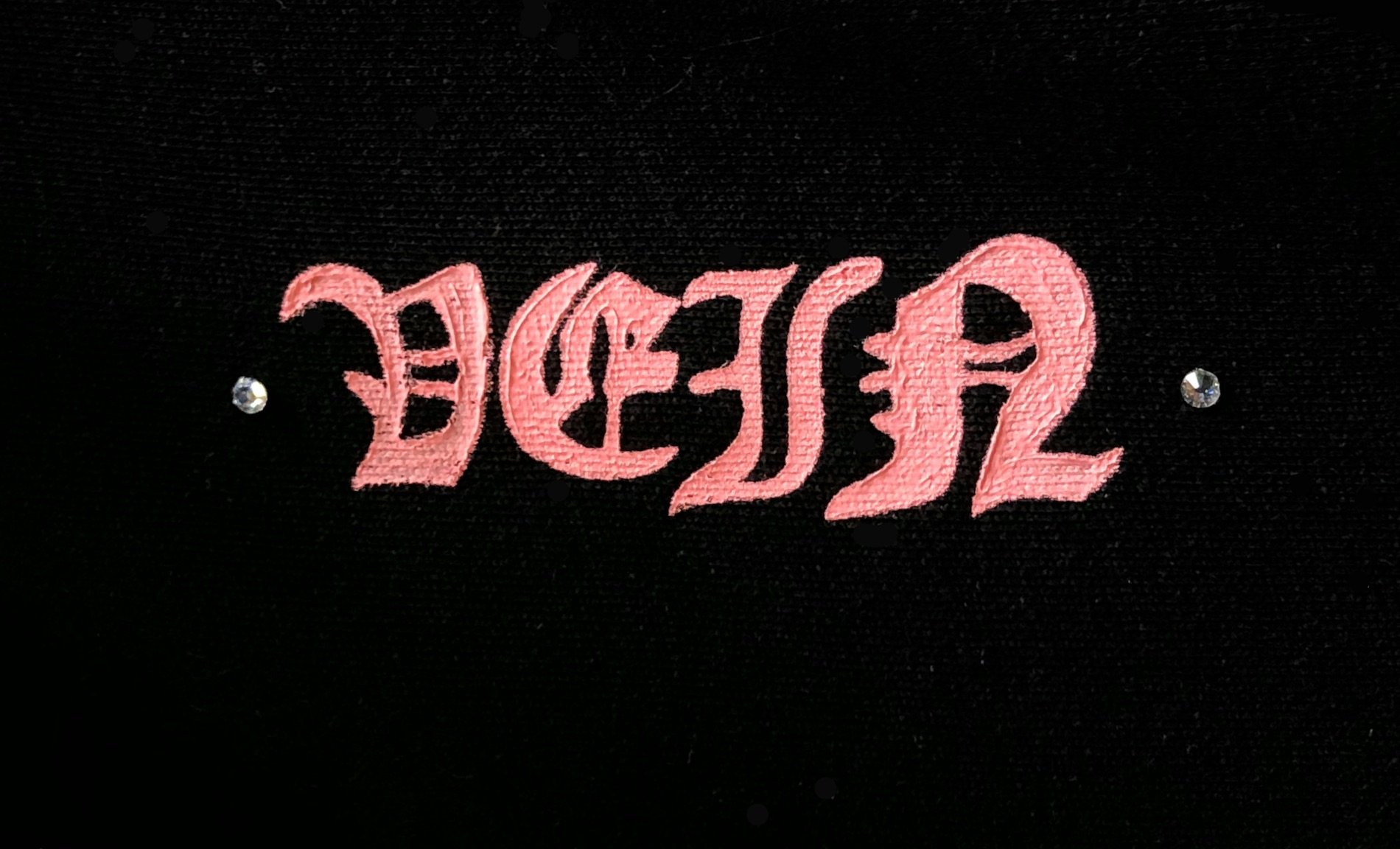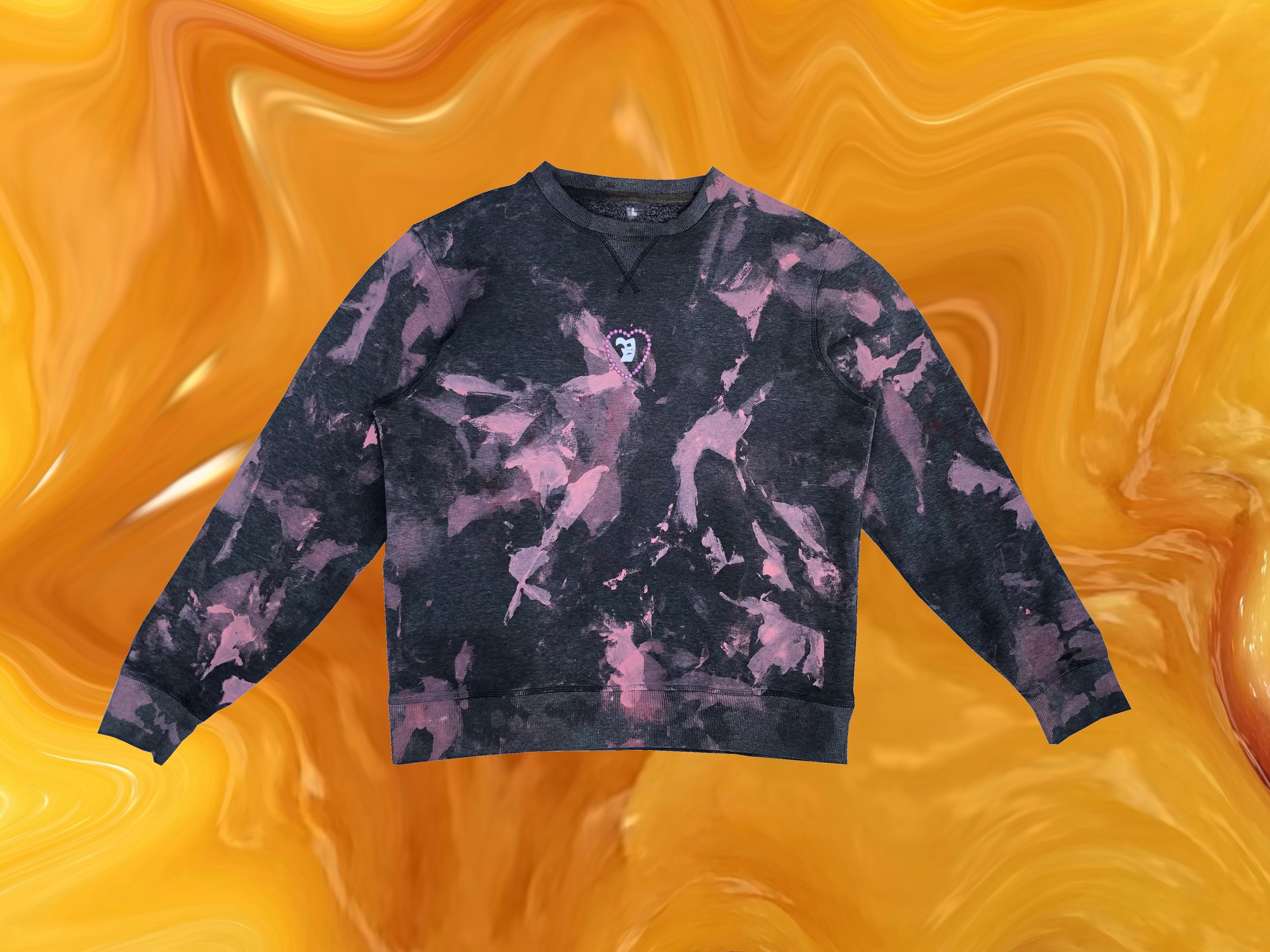'VEIN'/ [Interview]
Naarm based label VEIN is de-gendering fashion with design that encourages self-customisation and embellishment.
Photography: Seth McKellar (@seth_mck666 )
For Naarm based designer Seth, VEIN is a way of connecting with his community and enabling self- customisation through fashion. What started out as hand painting T-shirts to raise funds for Seth’s gender affirming surgery soon became a passion for creating and customising garments for friends and community. With VEIN, Seth seeks to de-gender fashion with design that embraces the excessive and playfully manipulates the gender binary.
For Seth, it is important that everyone can look and feel great in their designs, which are characterised by Seth’s unique and artful embellishment using diamantes, paints and dye. Facilitated by a considered slow-fashion process that reflects the wearer, VEIN creates a space within the fashion world where rigidity and rules do not apply.
I was grateful to be able to speak with Seth to learn more about his practice and what he aims to achieve with VEIN.
Photography: Bridget Gilmartin (@hard_wax) Model: Seth (@seth_mck666)
Hi Seth! Thanks for taking the time to speak with me. Can you tell us a bit about yourself and how VEIN came to be?
Hello! It’s a pleasure, thank you for reaching out to chat. I’m Seth and I’m currently living and working in Naarm. I love to create, play chess with my boyfriend and forage along the Merri Creek. Before I had even given it a name, VEIN started as a fundraiser to pay for my gender affirming surgery this year. I hand painted red cherubs onto white t-shirts and was so overwhelmed by how many people bought a top. Being able to raise funds while doing something I loved made me so excited and I knew I wanted to do more. I began customising hoodies and t-shirts for my friends and housemates, and it sort of grew from there.
Is there a story behind the name VEIN?
I knew I wanted to call the brand something short and four-lettered. I was going on a stroll around the cemetery with my friend Kate and we were playing with name ideas when she suggested “vein”. I liked the double-meaning of the homophone. It seemed so fitting that we were in a graveyard and she had put forward an idea so bodily and visceral, that also subtly poked fun at the vanity of the fashion industry. Once I’d put the word into gothic font it just looked so right.
Photography: Seth (@seth_mck666) Model: Kirsty McKellar (@kirsty_mck)
Who did you have in mind when you created VEIN, who are your garments for?
VEIN clothes are for anyone, but I get particularly excited when a trans/queer person purchases a garment. It feels so good to connect with my community over something as fun as fashion, especially when comfortability in clothes and combatting potential dysphoria can be significant hurdles for many trans people. I’m enjoying reclaiming a space that has historically been challenging.
As a trans person I advocate for the de-gendering of fashion, which is to say that no garment is better suited to someone over anyone else. For me, “femme” and “masc” are merely fun realms to play and express myself within, rather than rigid categories or intransigent sections at a department store. Once I realised that I didn’t have to wear certain clothes, my whole world shattered in the best way possible. Someone who I have great respect for is Alok Vaid-Menon (@alokvmenon), who speaks and writes extensively about de-gendering fashion, as well as the colonial and racist histories of gendered clothing. Listen to (the beloved) Laverne Cox’s interview with them “Moving Beyond the Gender Binary” for a more intensive unpacking of these histories.
Photography: Seth (@seth_mck666)
Your garments are ethically sourced, can you talk a bit about your process and the importance of sustainability within your practice?
Slow fashion is an essential part of VEIN. The current climate crisis and multi-billion dollar fast-fashion industry are not things I want to actively contribute to, especially not as a business. Initially I was sourcing garment bases from ASCOLOUR and AUSTRALIAN STITCH because their ethical standards aligned well with mine. While their garments are of a great quality, it still troubled me solely profiting from newly made products. I don’t want to contribute to the newness and sterility that fuels consumer culture in the West. To counteract this, I began upcycling materials from thrift stores. Using textiles that are already in circulation not only makes more sense to me from a sustainability point of view, but also forces me to be creative as I can’t always rely on certain sizes/styles being in stock. Finding resources this way has been doubly hard because of stores closing during the pandemic, but the internet can be a magical place.
Photography: Seth (@seth_mck666)
Who or what has inspired you to create VEIN? Who are your favourite designers?
I adore anything camp and gaudy. When I think a VEIN garment is almost done, I like to bedazzle, dye or paint it just a little bit more. In terms of fashion inspiration, I love the aesthetics of underground queer spaces from the interwar period in Germany. Despite the political extremism and immense poverty that ravaged through the Weimar Republic, queer spheres still prospered, albeit surreptitiously. Think draping fabric, layered necklaces and earrings, strappy garters and bright lipstick on everyone.
This century, I’m inspired by musician and artist Arca (@arca1000000) and the way she merges futuristic cyborg aesthetics with a sleek hyperfeminity. She helped me realise that you can customise yourself and embrace excessive embellishments, evident in the diamontes on much of my merchandise. VEIN is simply an extension of that customisation, as the pieces are unique and often influenced by the artistic ideas of each customer. Another artist that helps fuel my creativity for VEIN is Chella Man (@chellaman), who has recently put his artwork onto clothes. I adore his linework and bold use of colour, which is reflected in the often-striking colours of VEIN hoodies and jumpers.
Photography: Seth (@seth_mck666)
Each of your garments is unique, is it important to you that each design is one-off or is larger scale production of your designs something you would like to move towards as the label grows? On that note, are there any exciting updates in store for VEIN in the future?
In a globalised world of mass-production and cookie-cutter perfection, making one-off garments is pretty satisfying. For lighter summer wear, such as caps, totes and tops, I’m enjoying doing one-of-one items. I’m super excited to be releasing these upcycled items on the VEIN page throughout the warmer seasons. This process also allows me to experiment more with new techniques and assess what people are interested in while the business is in its preliminary stages. I love the feeling of working with my hands and slowly crafting something, which is why I do most of the painting, screen-printing and gem-sticking by hand. For Autumn, I’m hoping to branch out and make some trousers and would also love to keep them as one-of-one designs.
I did, however, recently collaborate with the lovely people over at TESSELLATE (@tessellate.club) where we did a run of thirty or so hoodies that were screen-printed by WASHROOM STUDIO (@washroomstudiothornbury). Similarly, I am in the process of mocking up some scarves for next winter and am hoping to make small runs of the same design. As the business grows it would be great to do more projects with other artists at a slightly larger scale, while keeping most of the garments as one-offs.
You can keep up to date with VEIN here.
Interview and words by Sarah Hellyer (@sorry_sweetie)
Cover Image Photography: Seth (@seth_mck666) Model: Bridget Gilmartin (@hard_wax)
Thank you for reading this article. Before you leave the page, we’d like you to take a moment to read this statement. We are asking our readers to take action and stand with the BIPOC community who fight and endure the oppression and injustice of racial inequality.
Here in ‘Australia’, Indigenous people are the most incarcerated population on Earth. Countless lives have been murdered by white police, white government policies and this country’s white history, institutionalised colonialism and ongoing racial oppression. Racial injustice continues today under the phoney, self-congratulatory politics of ‘Reconciliation’ and the notion that colonialism is something that must be denied and forgotten, an uncomfortable artefact of the past.
Feeling guilty is not enough. We must take action, pay the rent, educate ourselves and acknowledge that empathy and sorrow for past actions is insufficient if this does nothing to prevent our current reality from extending into the future.
Please consider making donations to the following organisations (the list is so small and the work to be done is so large, do your research to find more grassroots, Indigenous-lead community organisations):
Indigenous Social Justice Association - fighting to stop Indigenous deaths in custody
Firesticks Alliance - who campaign for Indigenous land management, cultural burning and looking after Country







